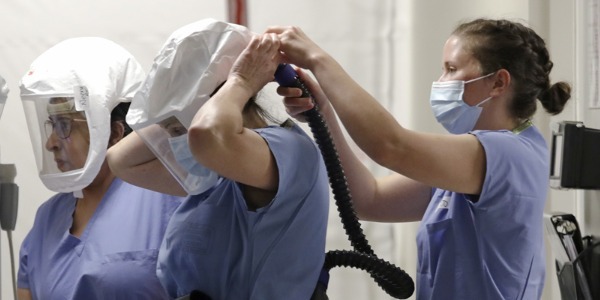OSHA Releases Long-Awaited Emergency Temporary Standard

By Cotney Attorneys & Consultants.
You may remember that soon after taking office, President Biden signed an Executive Order requesting the Occupational Safety and Health Administration (OSHA) review the need for a COVID-19 emergency temporary standard (ETS). He gave OSHA a deadline of March 15, 2021 to issue that standard. Just prior to that deadline, on March 12, the agency issued a national emphasis program (NEP), which intended to protect employees working in high-hazard industries and ensure that any employees voicing concerns regarding COVID-19 safety would not face retaliation. But weeks passed with no mention of an ETS.
Finally, months later, on June 10, 2021, OSHA issued its long-awaited ETS, but it relates solely to the healthcare industry.
Labor Secretary Marty Walsh explained, “Science tells us that healthcare workers, particularly those who have come into regular contact with people either suspected of having or being treated for COVID-19, are most at risk. OSHA has tailored a rule that reflects the reality on the ground.”
Recent recommendations from the Centers for Disease Control and Prevention (CDC) have seemed to indicate that a full-fledged ETS might not be necessary. However, union leaders, other labor supporters, and scientists who favored an ETS may be confused or annoyed.
“With highly transmissible variants posing a threat to public health, uneven vaccination rates and the relaxation of previous requirements, this is no time to let down our guard,” said Union of Concerned Scientists Executive Director Kathleen Rest. “Infection rates are declining, but the pandemic is not over. All workers deserve a safe environment with science-based protections from COVID-19.”
Requirements for the Healthcare Industry
The new ETS sets requirements for employers in healthcare, including facilities such as nursing homes, assisted-living centers, and hospitals. It also covers home healthcare workers, emergency responders, and other medical personnel. Those standards include the following:
- Creating and implementing a worksite COVID-19 plan, focusing on identifying hazards and controlling virus transmission
- Providing face masks for employees and enforcing their use, including the provision and use of N95 respirators in certain circumstances
- Managing worksite entry points, including the screening of patients, clients, visitors, and delivery workers who request entry
- Continuing to ensure physical distancing between all workers and others on-site, preferably a distance of six feet but as must space as possible when that directive is not feasible
- Creating and implementing transmission-based precaution procedures and policies
- Screening employees for COVID-19 exposure and following a notification process
- Establishing consistent protocols for cleaning and disinfecting work areas
- Providing ventilation in work areas
- Training all employees on processes
- Keeping accurate records of all COVID-19 events and reporting hospitalizations and deaths
- Providing employees with paid time off for receiving vaccinations and recovering from any adverse side effects
Employers must allow any employees who have contracted COVID-19 to work remotely or take paid time off. They must also prohibit retaliation against any employees who exercise their rights or make complaints related to the ETS.
Finally, per the ETS, fully vaccinated employees are not required to wear masks or physically distance if they are in areas where it is doubtful that anyone will have or be suspected of having the coronavirus.
Additional Guidance for Other Industries
In addition to the ETS, OSHA provided revised guidance for workers outside the healthcare industry. These guidelines focus on encouraging vaccination and lowering risk for unvaccinated workers. OSHA has followed the CDC standard that fully vaccinated workers are not required to follow previously mandated safety measures.
Even though OSHA seems to be implying there is no need for a broad ETS, employers are advised to continue following the stipulations of the earlier NEP. Those who fail to do so may be subject to OSHA citations.
Disclaimer: The information contained in this article is for general educational information only. This information does not constitute legal advice, is not intended to constitute legal advice, nor should it be relied upon as legal advice for your specific factual pattern or situation.






















Comments
Leave a Reply
Have an account? Login to leave a comment!
Sign In